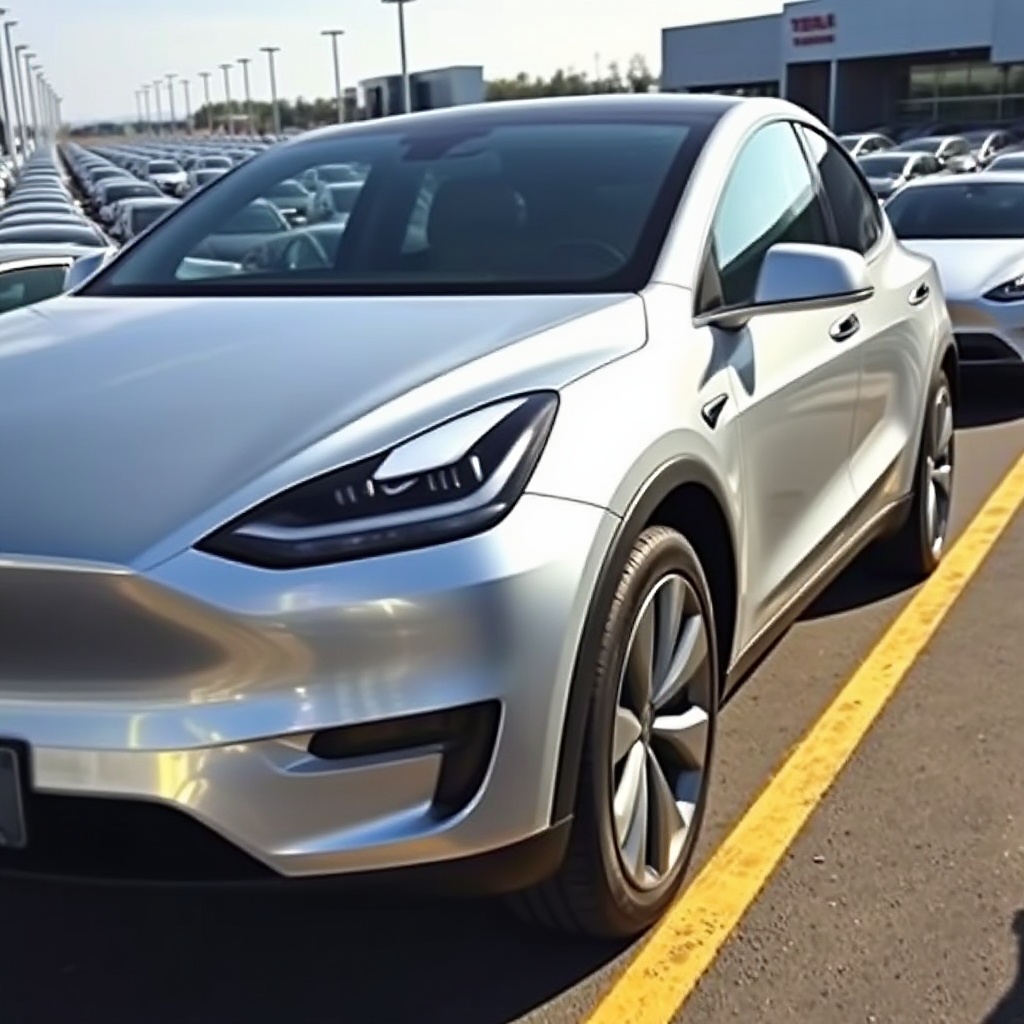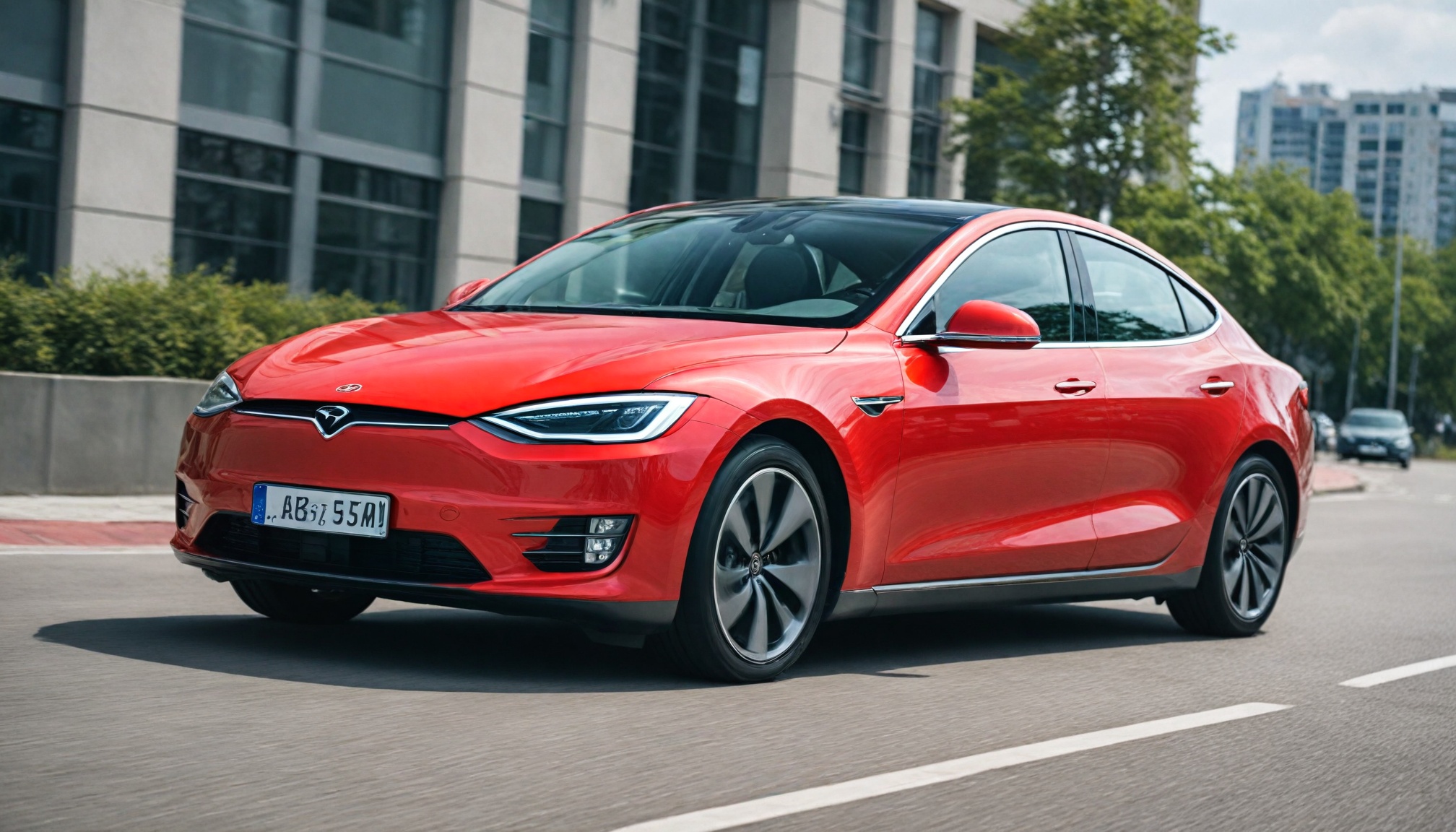
Tesla offers $2,000 discounts on new Model Y amid growing inventory and falling deliveries, signaling demand concerns beyond production constraints.

Drivetech Partners
Tesla's recent aggressive discounting of the newly redesigned Model Y reveals significant challenges in maintaining sales momentum despite the vehicle's fresh look. The electric automaker is now offering substantial incentives to early adopters while inventory builds up across dealerships, signaling deeper demand issues that extend beyond production constraints.
Key Takeaways
Tesla is offering $2,000 loyalty discounts to 2020 Model Y owners amid growing inventory concerns
Q1 2025 deliveries fell to 336,681 vehicles globally, marking a 13% year-over-year decline and missing analyst expectations
Production transition for the new Model Y design contributed to sales slowdown but doesn't fully explain mounting inventory levels
Aggressive financing options and lease deals represent a strategic shift toward traditional automotive sales tactics
Growing competition and a robust used Tesla market are potentially cannibalizing new vehicle sales across global markets
Model Y Discounting Signals Demand Concerns
Tesla's decision to offer significant discounts on its newly redesigned Model Y raises red flags about demand. The company is now extending a $2,000 loyalty discount specifically targeting early Model Y owners from 2020, suggesting an urgency to maintain customer loyalty. This move comes surprisingly soon after the vehicle's redesign, which typically would generate enough consumer interest without additional incentives.
Perhaps more telling is the accumulating inventory of new Model Y vehicles across multiple regions. Even the premium "Launch Series" models remain unsold in some areas, a clear indication that sales momentum has stalled. Tesla is also offering free Full Self-Driving (FSD) transfers for customers upgrading their vehicles, further demonstrating the company's push to stimulate purchases.

Q1 2025 Delivery Numbers Disappoint
The recent discounting strategy follows Tesla's disappointing Q1 performance in 2025. The company delivered only 336,681 vehicles globally, representing a 13% year-over-year decline and falling significantly short of analyst expectations, which ranged between 377,592 and 407,900 deliveries.
The numbers reveal a concerning trend for Tesla's flagship models:
323,800 deliveries were Model 3 and Model Y vehicles
Just 12,881 deliveries came from other Tesla models
Overall deliveries declined by 32% quarter-over-quarter
U.S. deliveries were approximately 20,000 fewer compared to the previous year
Perhaps most concerning, Tesla added approximately 26,000 vehicles to inventory during Q1, a clear indicator that production is outpacing demand rather than the other way around.
Production Transition Only Partly Explains Slowdown
Tesla has cited the Model Y production transition as the primary cause for lower delivery numbers. The company underwent a simultaneous line changeover for the Model Y across all four of its global factories, resulting in several weeks of lost production due to retooling for the new design.
During Q1, Tesla produced a total of 362,615 vehicles, with 345,454 units being Model 3 and Model Y vehicles and 17,161 units coming from other Tesla models. While these production challenges undoubtedly contributed to the delivery shortfall, they don't fully explain the growing inventory levels and need for aggressive sales incentives.
Aggressive Financing Attempts to Stimulate Demand
In a notable shift from its historical sales approach, Tesla has introduced competitive financing packages across its Model Y lineup. Current offers include 5.99% APR for 72 months on all 2024 Model Y variants, including the RWD Long Range, Dual Motor AWD Long Range, and Performance models.
Lease options have also become more attractive with deals such as:
$399/month for 36 months with $4,093 due at signing for the 2024 Model Y Dual Motor AWD Long Range
$599/month for 36 months with $4,293 due at signing for the Premium Performance model
These financing terms represent a significant departure from Tesla's previous sales strategy and indicate the company's adoption of traditional automotive sales tactics to move growing inventory.
Market Response to Sales Challenges
Despite the concerning sales figures, Tesla's stock dropped only 1.87% following the Q1 announcement. Analysts suggest this muted response indicates the market had already anticipated weaker performance. The company's P/E ratio has declined from approximately 80 at the end of 2023 to 43.6 by February 2024.
Even with this decline, Tesla's valuation remains significantly higher than the industry average P/E of 11.51 for automotive companies. This suggests investors still maintain some confidence in Tesla's long-term prospects despite current challenges, though this is a notable drop from the company's peak valuation that exceeded $1 trillion in 2021.

Brand Appeal and Market Saturation Concerns
Beyond the U.S. market, Tesla faces similar challenges globally. Model 3 sales were down 30% in Europe for the first two months of 2025, pointing to broader demand issues not just related to Model Y production constraints.
The rapidly growing used Tesla market may be cannibalizing new vehicle sales, as more pre-owned options become available to consumers at lower price points. Depreciation issues have become more pronounced as the secondary market expands, potentially dampening enthusiasm for new vehicle purchases.
Customer Loyalty and Competitive Pressure
The special incentives targeting original Model Y owners suggest Tesla has concerns about customer retention. The free FSD transfer incentive appears specifically designed to prevent customers from switching to competing brands as more options become available in the electric vehicle market.
Growing competition from both traditional automakers and new EV startups is eroding Tesla's market share and unique positioning. As the EV market matures, Tesla's brand appeal appears to be weakening, forcing the company to adopt more conventional sales strategies that it had previously avoided.
This shift toward traditional automotive industry tactics represents a significant change in Tesla's approach and acknowledges the increasingly competitive landscape in which it now operates.
Sources
YouTube - Tesla Incentive Update
Tesla Motors Club - Model Y Inventory Pricing Discussion
Teslarati - Tesla Q1 2025 Vehicle Deliveries Report



